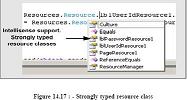Can you explain collation sequence in sql server
Can you explain collation sequence in sql server?
✍: Guest
First let’s define collation.
Collation sequences are set of rules which determine how the data is sorted and compared.
Sorting rules can be defined with options with case-sensitivity, accent marks, kana character
types and character width.
Case sensitivity
If A and a, B and b, etc. are treated in the same way then it is case-insensitive. A computer
treats A and a differently because it uses ASCII code to differentiate the input. The ASCII
value of A is 65, while a is 97. The ASCII value of B is 66 and b is 98.
Accent sensitivity
If a and á, o and ó are treated in the same way, then it is accent-insensitive. A computer
treats a and á differently because it uses ASCII code for differentiating the input. The
ASCII value of a is 97 and áis 225. The ASCII value of o is 111 and ó is 243.
Kana Sensitivity
When Japanese kana characters Hiragana and Katakana are treated differently, it is called
Kana sensitive.
Width sensitivity
When a single-byte character (half-width) and the same character when represented as a
double-byte character (full-width) are treated differently then it is width sensitive.
2007-11-02, 5283👍, 0💬


